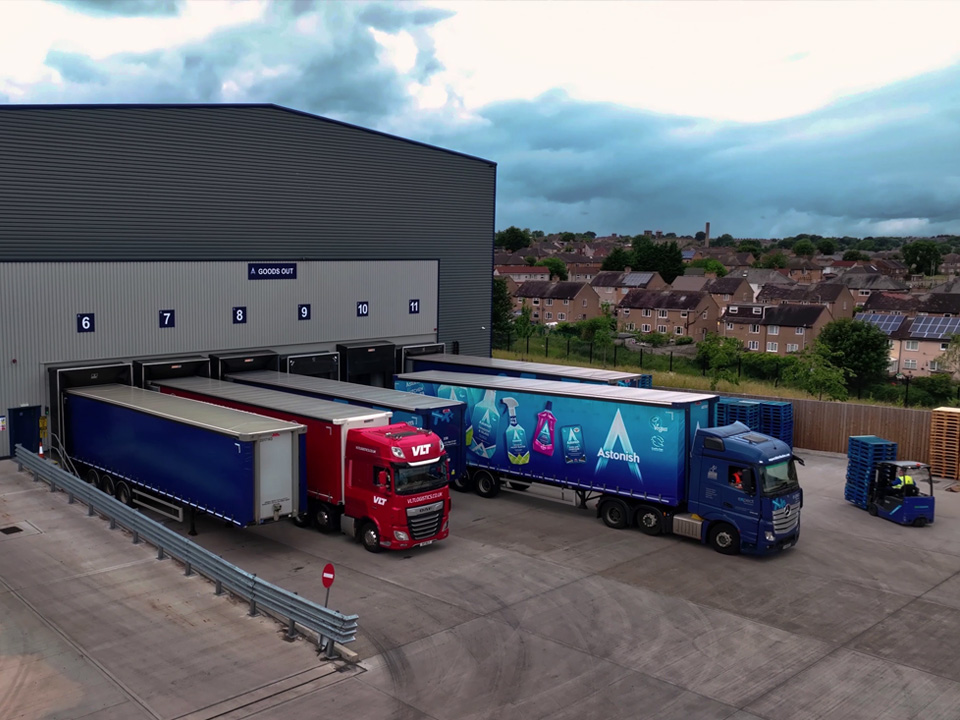Every year, countless drivers of delivery vehicles are involved in accidents… sometimes fatally. Almost always, these tragedies result from poor planning and procedures.
But it doesn’t need to be that way.
The great majority of accidents and incidents could be prevented with clearer and closer communications at every stage of the process, along with the introduction of some simple, straightforward guidelines comprehensive Risk Assessments and Safe Systems of work.
Is this a good time to review your operations?
YOUR RESPONSIBILITIES
According to HSE, employers have duties under the Health and Safety at Work etc. Act 1974 to do everything in their power to ensure the health and safety of their employees and others who may be affected by their work activities, including visiting delivery drivers.
That process should start through close collaboration between the recipient company, the suppliers and, where appropriate, third-party hauliers. For the purposes of this article, though, we’ll be focusing primarily on measures designed to keep drivers safe immediately preceding and during a delivery.
RIGHT FROM THE START
Where possible, delivery drivers should receive clear information ahead of each delivery/collection to ensure goods can be safely loaded/unloaded. This should include easily navigated directions to the correct entrance to your premises and could include helpful warnings of road works or low bridges.
It should also include details of any restrictions on the type or size of vehicle the site can safely handle (e.g. are visiting lorries required to have CCTV or other reversing aids fitted?)
On entering your premises, it’s important that every visiting delivery driver knows what to expect and complies with your rules. They should be provided with a site plan or sketch showing where to park on arrival, location of reception, and instructions on who to report to and where they can be found.
For drivers who visit regularly, much of this can be communicated via a prominent board at the site entrance reminding them of:
- on-site rules.
- hazards present (e.g. forklifts, pedestrians, chemicals).
- the speed limit.
- the direction of the office/reception.
- safety equipment required (e.g. hi-vis clothing, steel-capped boots).
- emergency procedures.
For drivers visiting for the first time, it may be wise to provide an induction outside of the cab. That could include:
- a video or interactive overview of the hazards.
- a printed guide with the hazards listed and a map of any specific areas they will be using.
- A walk around the site with a health and safety representative who can point out the hazards.
It’s important to establish whether visiting drivers can understand English. If not (or you are unsure) could the information be translated or could pictograms be employed if a video presentation is not available?
a safer site
The safest method of traffic movements around most premises is via a one-way system. Not only is it more predictable for both pedestrians and drivers, it eliminates head-on crashes and minimises the need for potentially dangerous reversing manoeuvres*.
Marked pedestrian walkways should indicate places that pedestrians can safely cross. In particularly hazardous areas, pedestrians can be protected from walking out into oncoming vehicles by erecting barriers or by introducing a traffic light system.
Clear markings should be used to prevent drivers from parking in restricted or inappropriate places, such as where they may be blocking a fire exit.
*If a driver does need to reverse but doesn’t have a spotter/banksman, you should be prepared to provide one to help them manoeuvre safely.
EVERYTHING IN ITS RIGHT PLACE...
Make sure the loading/unloading area is a clearly designated, suitably lit space. Ensure that all staff not directly involved in the loading/unloading process are excluded.
The remaining staff employed to load and unload visiting vehicles should be appropriately trained and supplied with the necessary personal protective equipment (PPE).
From the outset it should be made clear to the visiting driver who will be in overall charge of the (un)loading process, and a point should be agreed when the visiting driver "gives permission" for their vehicle to be (un)loaded.
From this point the delivery driver should keep a distance from the vehicle and be shown to a safe space to wait while their truck is being (un)loaded. Ideally this should offer easy access to toilet and refreshment facilities. A viewing area may be needed for drivers to observe loading since responsibility for the safety of the load becomes their responsibility once they are in transit.
The driver of the delivery vehicle should not use a forklift truck at the delivery site unless this has been agreed in advance and the driver is trained in accordance with the Approved Code of Practice.
COULD WE DO BETTER?
All parties should set up simple, well understood systems for reporting any vehicle accidents, incidents, near misses and other safety concerns during deliveries and collections. As part of this, mechanisms for exchanging this information with other interested parties should be established.
Reporting of incidents and concerns should be actively encouraged, and appropriate action taken.
Even in the absence of near misses etc., existing arrangements should be reviewed to identify additional steps that could be taken to reduce risk — ideally in consultation with safety representatives, forklift operators, supervisors etc.
what next?
To help keep sites safe we have created a free download containing key ‘dos and don’ts which can be handed out to staff, posted on noticeboards etc. To get your Tips for Visiting Delivery Drivers, simply click here or select the button below.
Alternatively, if you would like first-hand advice, one of our friendly experts will be happy to review your site and procedures, completely free and without any obligations. Simply call the Greenline on 0845 3713048 or email info@mitsubishi-forklift.co.uk
References: https://www.hse.gov.uk/workplacetransport/lift-trucks/managing-lift-trucks.htm





